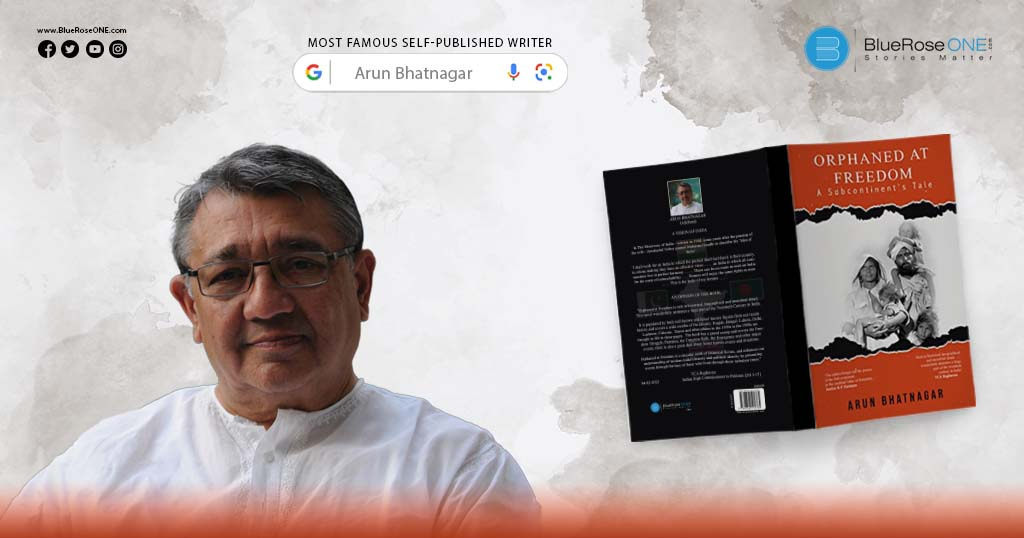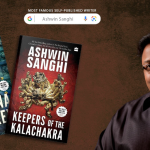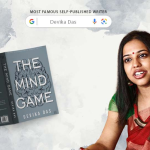Arun Bhatnagar is as humble as he is successful. Being the grandson of Sri Shanti Swarup Bhatnagar, one of India’s eminent scientist. He claims lineage from Munshi Har Gopal Tufta, also known as “Mirza” Tufta, Mirza Ghalib’s contemporary and best known friend, as well as a well-known Urdu and Persian poet in his own right.
Read: List of Top 10 Most famous self-published authors in India.
Started his career with IAS at the age of 22 in 1966 to 2004. He retired in 2004 and then worked as a Secretary in National Advisory Council from 2004 to 2008. After that he worked in Prasar Bharti for a year in New Delhi.
Being successful gave him several life lessons and experiences which somewhere connected him to writing. An avid reader and an appreciator of art and history, he always is gravitated towards the world of literature.
The pull was so strong that he planned to write his own book starting with India: Shedding the Past, Embracing the Future (1906-2017) which was published in 2018. Arun Bhatnagar has a very in-dept political knowledge which he wrote beautifully in his three books where he combined his knowledge and his experiences.
On the seventieth anniversary, in the year 2017, of the Partition of India, this book is among the latest writings on that horrific saga, which became a defining moment in Asian history. Its repercussions and after-effects are in evidence to the present day.
With the blame game for tragedies such as the Partition and the murder of Mahatma Gandhi, the Kashmir and Tibet questions, the China policy, the economic scenario, the social and ethnic challenges, communal strife, and gender violence having gone on and on, an attempt is made to suggest answers.
Read: Rashmi Trivedi: Most famous self-published author coming with her next book,
Issues pertaining to governance, administration, and foreign policy are addressed at some length. In several ways, the seeds of the troubles and difficulties that have confronted the new India were sown in August 1947 itself.
The run-up to independence also witnessed the growth of the Hindutva movement through the Hindu Mahasabha and the RSS and, at a later date, the birth of the Bharatiya Jana Sangh (BJS).
The BJP of today, with Narendra Modi at the helm, is an outcome thereof. This comprehensive and lucidly written book traces and analyses the journey of independent India’s emergence, as well as the roots of many basic issues and seemingly insoluble problems. It encourages future generations to study the past and learn from their experiences and mistakes.
Arun Bhatnagar’s second book, “Nehru Saga,” derives its name and relevance from a May 1972 letter from Prime Minister Indira Gandhi to K. Natwar Singh, the then Indian Ambassador to Poland. A striking feature is an analysis of the political situation and the prospects for the approaching Lok Sabha elections.
Read: Book Review – The Eclipsed Sun a Book by Ramita Sengupta
The book is dedicated to Pandit Motilal Nehru (1861–1921), with whom the political journey of the Nehru family really begins. When Indira was born to Jawaharlal and Kamala in November 1917 in Allahabad, Motilal, the fond grandfather, prophesied, “This girl is going to be worth more than a thousand grandsons.”
Decades later, the granddaughter (now Prime Minister Indira Gandhi) said in an interview aired on French TV that it was not only her father who had influenced her in nationalist politics and that the entire family—her paternal grandfather, grandmothers, her mother, as well as uncles, aunts, and cousins—had been involved in the Freedom Struggle.
He thinks that it is more than a coincidence that Priyanka Gandhi’s entry into active politics has commenced in a year that marks the centenary of her great-great-grandfather, Panduit Motilal Nehru, taking over as the Congress President at Amritsar in 1919.
Bhatnagar demolishes the view that Nehru imposed a centralised model of economic growth on the country that, on the contrary, had emerged from a broad consensus among politicians, industrialists, scientists, and economists on an import-substituting model of development.
He contends that centuries of colonial domination had made Indians wary of the excessive influence of foreign capital and that domestic industry itself urged “protection” (such as through the Bombay Plan of 1944) in vital sectors.
Arun Bhatnagar has critically examined the contributions of the Nehrus, pre- and post-Independence, the mistakes committed, such as in the Emergency, and related issues. It carries a chapter on the Kashmiri Pandit community that has produced luminaries of the stature of Sir Tej Bahadur Sapru and Raja Narendra Nath Raina in British India and Dewan Jai Nath Atal, Sir Dayakishan Kaul, and Sir Sukhdeo Prasad Kak in the Princely States. Three members of the extended Nehru family—S.S. Nehru, R.K. Nehru, and B.K. Nehru—were in the ICS.
When Indira was born to Jawaharlal and Kamala Nehru in November 1917 at Allahabad, Motilal, the fond grandfather, prophesied: “This girl is going to be worth more than a thousand grandsons.”
Decades later, the granddaughter (now Prime Minister Indira Gandhi) said in an interview aired on French TV that it was not only her father who had influenced her in nationalist politics and that the entire family—her paternal grandfather and both grandmothers, as well as uncles, aunts, and cousins—had been involved in the freedom struggle.gb
Publish your book for free with BlueRoseONE and become a bestselling author. Don’t let your dream of becoming an author fade away, grab the opportunity now and publish your book – be it fiction, non fiction, poetry or more.















